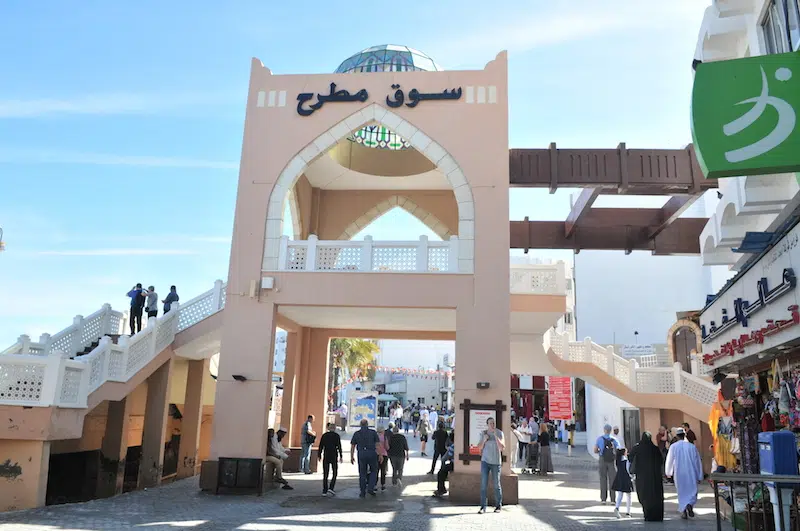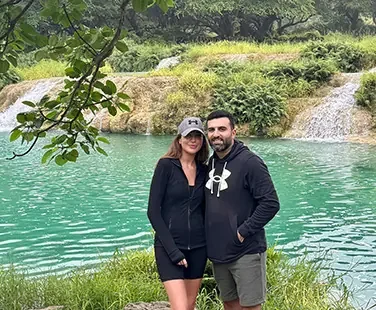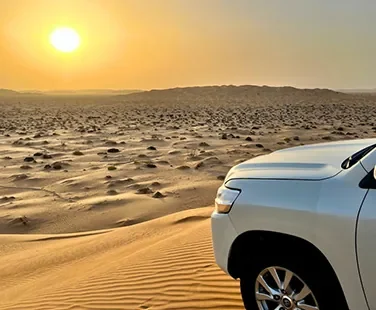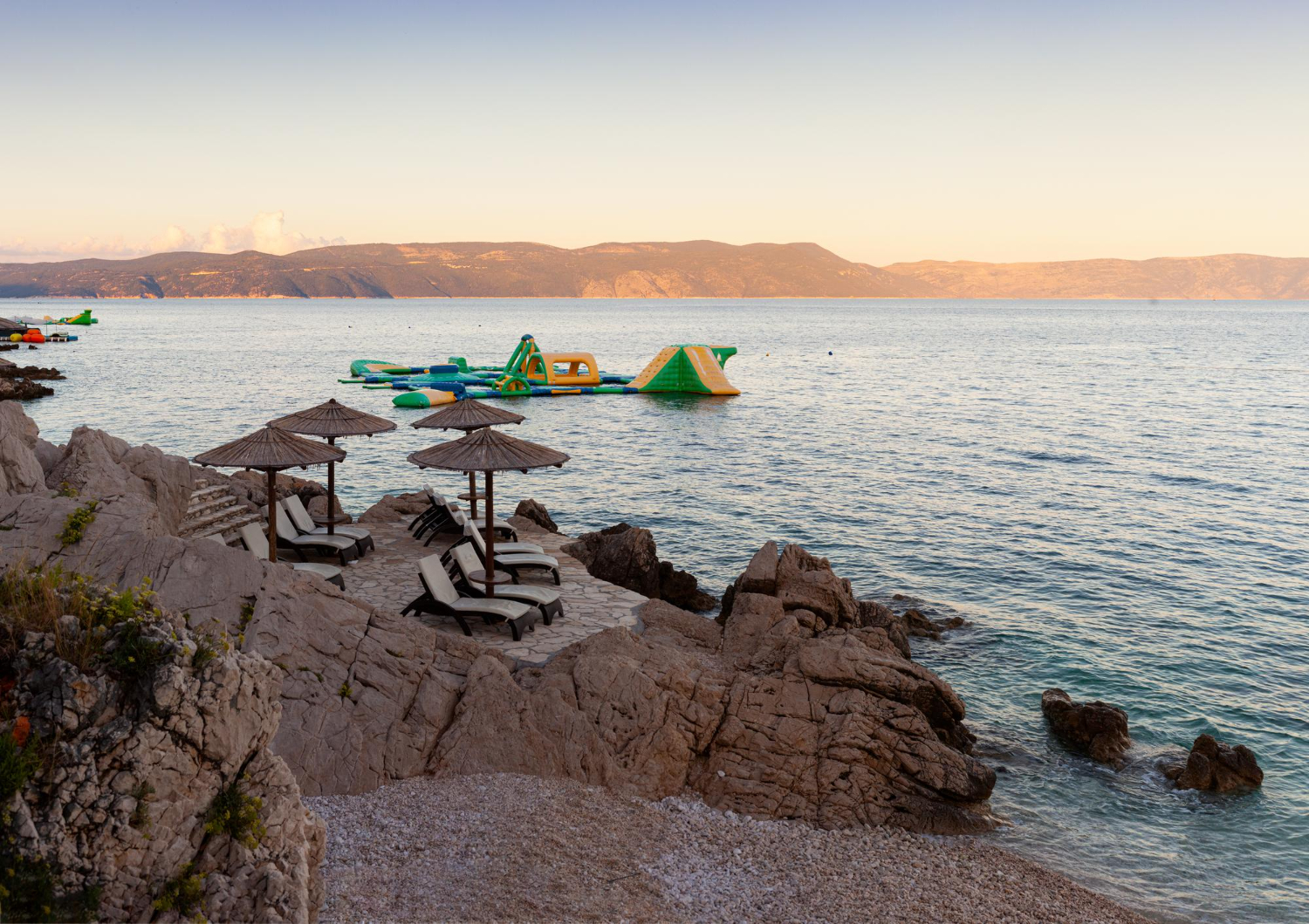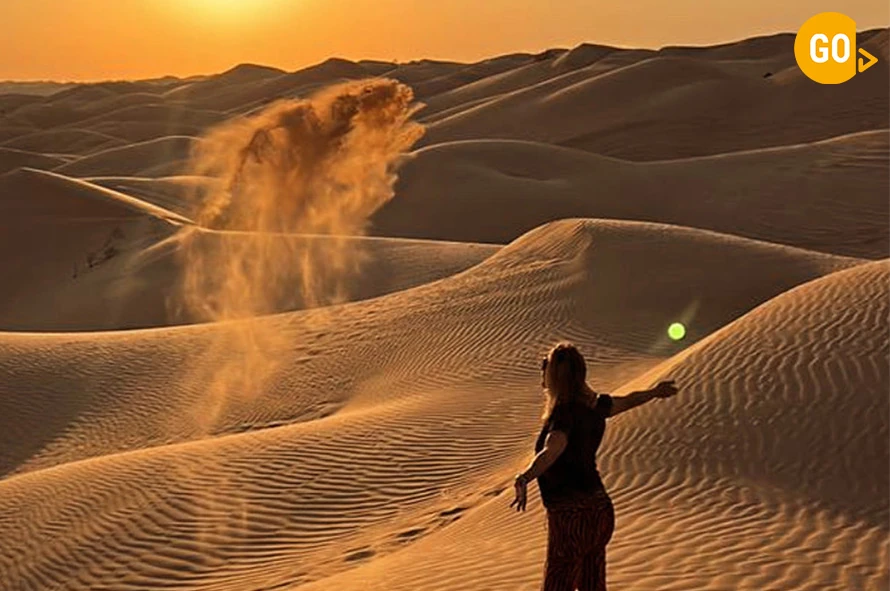Mutrah Souq Muscat transports you to a living museum where Omani trading traditions thrive. Frankincense perfumes the air while narrow alleyways pulse with the gentle hum of daily commerce – a rhythm unchanged for more than 200 years.
This historic bazaar stands as one of Mutrah’s oldest marketplaces. The souq maintains its authentic charm while embracing modern conveniences. We spent countless hours wandering its winding corridors. We found hidden treasures and learned traditional bargaining techniques from local vendors who shared their wisdom.
Our detailed guide will show you everything we learned about this ancient marketplace. You’ll find authentic Omani crafts and become skilled at essential bargaining phrases. These insights will help you prepare for an unforgettable shopping experience in one of Oman’s most cherished cultural landmarks.
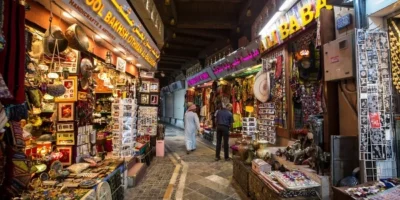
Historical Journey Through Mutrah Souq
Let’s take a closer look at the rich history of Mutrah Souq Muscat . Sultan Said bin Sultan built this remarkable marketplace in the 1820s. A simple structure of mud and palm leaves grew into one of Oman’s most important commercial centers.
Origins and Development Since the 1800s
The story of Mutrah Souq Muscat started during the age of sail. Muscat was a vital trading port that connected East and West. The marketplace’s original Y-shaped layout is 200 years old and still exists today. People called it the “Market of Darkness” because sunlight barely reaches through the traditional roofing in its maze-like alleys.

Architectural Heritage and Design
Mutrah Souq Muscat architectural development shows how well it adapted while preserving its heritage. The structure used traditional materials that worked well in Oman’s harsh climate:
- Mud-brick walls that naturally regulated temperature
- Palm leaf roofing to provide shade and ventilation
- Narrow winding pathways that created natural cooling
- Wooden carved ceilings that showcase local craftsmanship
The Portuguese influence from the 16th century added new elements to the souq’s character. You can see this especially in the nearby fortifications and defensive structures that became part of the marketplace’s identity.
Cultural Significance in Omani Trade
Mutrah Souq Muscat has always been more than just a marketplace – it’s a melting pot of cultures. Since the 16th century, the souq has welcomed Arabs, Africans (mostly from East Africa), Pakistanis, Indians, and Persians. Each group added something special to its character.
The marketplace had two main sections: one for retail and one for wholesale products. This setup created an efficient trading system that worked for both local needs and international trade. The souq managed to keep its local Omani customers even as modern shopping malls appeared in western Muscat.
Trade shaped Mutrah Souq over centuries. Merchants came by sea with spices, gold, and textiles. They left with dates, fish, and the famous Omani frankincense. This exchange brought economic success and made Mutrah Souq Muscat Oman a key player in global trade networks.
Navigating the Souq’s Layout
Let’s take a closer look at Mutrah Souq Muscat, where each corner has its own story to tell. The fascinating marketplace runs deep into the city’s heart with two main entrances – one faces the Sea of Oman and Mutrah Corniche, while another opens into the city’s old quarters.
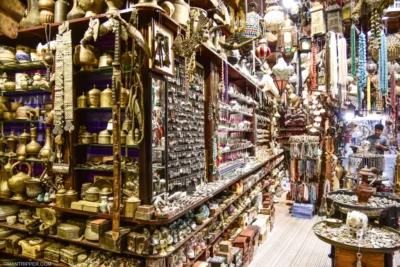
Main Sections and Their Specialties
The souq splits naturally into two main parts:
- The eastern section (known as “the small market” or “Market of Darkness”)
- The western section (called “the large market” – we mostly saw wholesale goods here)
Vendors with similar items stay close together, which makes a lot of sense. The main path guides you through an amazing mix of traditional Omani crafts, modern souvenirs, and everyday items. Once you get the hang of the layout, shopping becomes much easier.
Hidden Gems and Secret Passages
Mutrah Souq Muscat really shines with its hidden spots. Souq Al T’halam (Market of Darkness) stands out as one of the most interesting areas, especially with its large atmospheric alleys. The smaller side paths that branch off from the main walkways often lead to the most authentic experiences.
The watchtower’s upper floor has become our go-to spot. It not only gives you a beautiful view of the sea but also serves as a great meeting point. There’s a nice tourist restaurant connected to it where we like to take breaks during our walks.
Essential Navigation Tips
Here’s what we learned after many visits:
- Remember your entry point and use the corniche to get your bearings
- A downward-sloping path will take you to the waterfront if you get lost
- The atmosphere comes alive in the evening hours
- Pick out unique shops or building features as your landmarks
- Local vendors are happy to point you in the right direction – just ask
The wooden-roofed, winding lanes might look confusing at first. Getting a bit lost is actually part of the fun. You’ll feel safe even in the quietest corners since all boundaries and exits are clearly marked throughout this historic marketplace.
Traditional Treasures and Where to Find Them
Mutrah Souq Muscat holds a rich source of traditional Omani crafts that tell stories of centuries-old craftsmanship. Our many visits helped us create a mental map to find the most authentic items in this historic marketplace.

Authentic Omani Crafts and Antiques
The most precious traditional items sit near the main entrance. Here’s what we’d call must-see traditional treasures:
- Authentic Omani daggers (Khanjar)
- Antique coffee pots
- Traditional cooking vessels
- Handcrafted wooden items
- Decorative antique doors
Local Spices and Fragrances
The aromatic section of Mutrah Souq Muscat Oman became our favorite spot. The air feels magical with the mystical scent of frankincense. These verification steps will help you find authentic fragrances:
- Check for traditional clay incense burners
- Look for locally sourced frankincense varieties
- Sample different grades of oud
- Get into the spice packaging for authenticity
- Ask to smell the raw ingredients
Traditional Textiles and Jewelry
The textile and jewelry sections taught us how to spot genuine pieces from imitations. The silver market catches our eye with its exquisite pieces stamped with ‘925’ – the mark of genuine silver. The best textile shops sit in the eastern wing. You’ll find everything from traditional Omani costumes to vibrant African fabrics.
Jewelry shopping starts with a quoted price. We usually negotiate down to about 50-60% of the original amount. To cite an instance, silver bracelets start at 18-19 OMR, but we bought them for around 11 OMR after friendly haggling.
Our shopping experience becomes unmatched through chats with local artisans. They love sharing stories about their crafts, which adds a personal touch to each purchase. The smaller shops away from the main thoroughfare hide some of the most unique pieces. Traditional craftsmanship thrives in these quiet corners.
Mastering the Art of Bargaining
Bargaining is a way of life at Mutrah Souq Muscat. Our experiences taught us that it’s more than just hunting for deals – it’s about being part of a cherished cultural tradition. We’ve spent countless hours here and learned the art of negotiation that makes shopping at this place special.
Understanding Local Pricing Customs
The pricing system at Mutrah Souq Muscat Oman has its own unique character. Vendors use Rials and Baisa as currency, and one Rial equals 1000 Baisa. The sort of thing i love is how original prices are usually marked up three to five times above what sellers will take. Shopping here needs good negotiation skills and knowledge about local pricing traditions.
Essential Bargaining Phrases in Arabic
Our chats with local vendors helped us pick up these Arabic phrases that are a great way to get better deals:
- “Kam hatha?” (How much is this?)
- “Ghali” (Expensive)
- “Shway ghali” (A little expensive)
- “Mumkin takhfidh?” (Can you lower the price?)
- “Shukran” (Thank you)
Negotiation Etiquette and Tips
Our time at Mutrah Souq taught us these steps to bargain well:
- Research First: Check prices at multiple shops before making offers
- Start Low: Your first offer should be 40-50% of the asking price
- Show Cash: Physical currency in hand often guides sellers toward better deals
- Build Rapport: A friendly chat can lead to better prices
- Be Patient: Taking your time shows you mean business
Shopkeepers here speak multiple languages – Arabic, English, and Hindi/Urdu. This mix of languages helps us connect better with vendors during our bargaining sessions.
The real secret isn’t about pushing hard for lower prices. Success comes from respecting the culture and tradition behind the practice. Vendors tend to offer their best prices when we stay patient and keep things light-hearted.
Evening shopping has worked best for us because sellers are more open to offering deals then. Buying several items from one shop can unlock bigger discounts – a trick that works well when we need similar items.
Note that bargaining might be expected, but a smile and friendly attitude work better than aggressive tactics to get the best deals at Mutrah Souq Muscat.
Local Customs and Cultural Considerations
Time spent at Mutrah Souq Muscat taught us that local customs deserve our respect. This respect improves our shopping experience and cultural trip. Omani hospitality makes this historic marketplace welcoming to everyone who follows certain cultural practices.
Dress Code and Behavior Guidelines
Appropriate dress at Mutrah Souq Muscat Oman shows respect for local traditions and helps you blend in. Our visits taught us these simple dress code requirements:
- Shoulders and knees should always be covered
- Loose-fitting, non-transparent clothing is preferred
- Long trousers or ankle-length skirts work best
- Conservative necklines are expected
- Light, breathable fabrics make the experience more comfortable
The dress code feels more relaxed than at religious sites. Your modest attire helps you blend with the local community and shows respect for Omani cultural values.
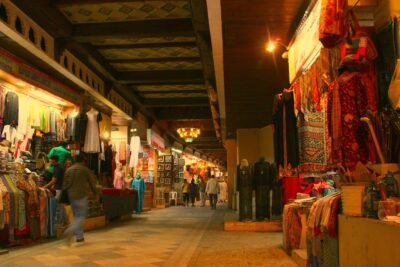
Photography and Social Etiquette
Photography rules at Mutrah Souq Muscat need careful attention:
- Always ask permission before photographing people or their shops
- Avoid photographing in the historic Shiite district of Al Lawataya
- Respect “no photography” signs, especially near residential areas
- Keep a reasonable distance when photographing merchandise
- Be mindful of local women’s privacy priorities
Most vendors welcome photos if you ask politely and maybe buy something small. Local residents’ privacy matters a lot, especially where the souq meets residential neighborhoods.
Interacting with Local Vendors
Omani merchants showcase true hospitality through their interactions. They take a gentler approach to sales compared to other Middle Eastern markets. This creates a relaxed shopping atmosphere.
The traditional coffee house near the souq’s entrance serves as a gathering spot for elderly local men. This fascinating glimpse into local life deserves our respect, so we keep our distance from these social spaces.
Vendors appreciate simple courtesies like saying “As-salaam-alaikum” (peace be upon you) and showing real interest in their crafts. Many shop owners love to share stories about their merchandise, especially traditional items like the mandoo (wedding chests) or authentic Omani artifacts.
The souq transforms throughout the day. Evening hours offer the most authentic experience as local families come out to shop and traditional market life springs into action. These moments call for extra mindfulness about social distance and family privacy.
Mutrah Souq Muscat stands out for its perfect balance as both tourist destination and community space. These cultural guidelines help us show respect for local traditions and give us better access to authentic experiences in this historic marketplace.
Conclusion
Mutrah Souq Muscat is proof of Oman’s rich trading heritage, where centuries-old traditions naturally blend with modern commerce. The true magic of this historic marketplace goes beyond its ancient architecture or precious merchandise. It lies in the authentic cultural experiences visitors can enjoy.
Our time in the souq taught us that successful navigation needs more than knowing the layout. Visitors should respect local customs and show patience while bargaining. They must appreciate traditional craftsmanship too. These unwritten rules help create meaningful connections with local vendors and lead to a deeper understanding of Omani culture.
The souq knows how to stay authentic while adapting to changing times. Each visit brings new finds within its historic walls, from traditional silver jewelry to aromatic frankincense and handcrafted textiles. The best experiences often hide in quiet corners away from busy paths. These hidden spots showcase genuine Omani hospitality at its finest.

